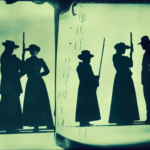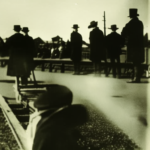The Emperor’s New Clothes: A Tale of Vanity and Deception
Once upon a time, in a kingdom far away, there lived an emperor who was obsessed with his appearance and clothing. This classic fairy tale, “The Emperor’s New Clothes,” written by Hans Christian Andersen, tells the story of a vain ruler who falls victim to the cunning tricks of two swindlers. Through its humorous and thought-provoking narrative, the story explores themes of vanity, deception, and the power of collective delusion.
The Swindlers’ Scheme
The tale begins with two cunning swindlers who arrive in the emperor’s kingdom, claiming to be master weavers capable of creating the most exquisite and magical garments. They convince the emperor that their fabric is so unique that it is invisible to anyone who is unfit for their position or “hopelessly stupid.” Intrigued by the prospect of owning such extraordinary clothing, the emperor eagerly agrees to their proposal.
The Emperor’s Vanity and Deception
Blinded by his own vanity, the emperor sends his most trusted ministers to inspect the weavers’ progress. However, when the ministers see nothing on the looms, they are too afraid to admit their inability to see the fabric, fearing they will be deemed unfit for their positions. Instead, they praise the weavers’ work, describing the imaginary colors and patterns in great detail.
Word of the magnificent garments spreads throughout the kingdom, and the people eagerly anticipate the emperor’s grand procession in his new clothes. On the day of the procession, the emperor, pretending to see the fabric, parades through the streets completely naked. The townspeople, caught up in the collective delusion, cheer and applaud, afraid to admit that they cannot see the clothes for fear of being labeled stupid or unworthy.
The Truth Revealed
It takes the innocence and honesty of a young child to break the spell of deception. As the emperor passes by, a little boy exclaims, “But he has nothing on at all!” The truth spreads like wildfire, and the townspeople finally acknowledge the reality of the situation. The emperor, realizing the extent of his own foolishness, continues the procession, feeling humiliated and exposed.
This timeless tale serves as a cautionary reminder of the dangers of vanity, deception, and the power of collective delusion. It highlights the importance of honesty, integrity, and the courage to speak up when faced with falsehoods.
Key Takeaways:
- Vanity can blind individuals to the truth and lead to their downfall.
- Deception can thrive when people are afraid to speak up or admit their own ignorance.
- Collective delusion can perpetuate falsehoods and prevent people from seeing the truth.
“But he has nothing on at all!”
In conclusion, “The Emperor’s New Clothes” is a timeless fairy tale that serves as a cautionary tale about the perils of vanity, deception, and the power of collective delusion. Through its humorous narrative, the story reminds us of the importance of honesty, integrity, and the courage to speak up against falsehoods. So, let us learn from the emperor’s folly and strive to see beyond appearances, embracing the truth even when it may be uncomfortable or challenging.












